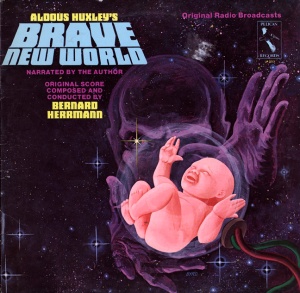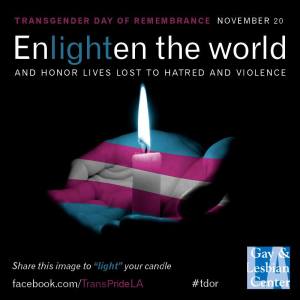On November 22, 1963, fifty years ago today, John F Kennedy, CS Lewis, and Aldous Huxley all died. Whose vision of the future – political, Christian or sci-fi dystopia, was closer to reality or dream as the true prophet of our times? Whose new world? Kennedy’s space race, cold war and “new frontier”, Huxley’s “brave” dystopia or Lewis’s “magical” Narnia?
 Kennedy’s political vision was cut short after less than 3 years as US President. In that time he was criticised for being lukewarm on civil rights though he was somewhat distracted by foreign policy issues such as Cuba, the Cold War and Vietnam. That said, he was generally supportive of congressional change and led moves to change policy on women, blacks and the death penalty. In 1961 at his first State of the Union Address he said that:
Kennedy’s political vision was cut short after less than 3 years as US President. In that time he was criticised for being lukewarm on civil rights though he was somewhat distracted by foreign policy issues such as Cuba, the Cold War and Vietnam. That said, he was generally supportive of congressional change and led moves to change policy on women, blacks and the death penalty. In 1961 at his first State of the Union Address he said that:
“The denial of constitutional rights to some of our fellow Americans on account of race – at the ballot box and elsewhere – disturbs the national conscience, and subjects us to the charge of world opinion that our democracy is not equal to the high promise of our heritage.”
At the Berlin Wall erection Kennedy criticised communism before a million onlookers in these words:
“Freedom has many difficulties, and democracy is not perfect. But we have never had to put a wall up to keep our people in, to prevent them from leaving us.”
Kennedy called his domestic policy program the “New Frontier”. Among the economic, education and health policies was a raft of measures to end discrimination and create equal employment laws. Fifty years later, how far has America come? Change takes time, but how long is acceptable to generations that have to die before they see substantive social evolution? There has been slow progress on Equal Marriage, just 14 states endorse it; the beginning of an end to gay discrimination in the military; yet a black President is significant – though it took less time and effort to get a man on the moon!
Indeed, Kennedy had urged international cooperation in space as a project that would be “impressive to mankind”, in both January 1961 and September 1963 Khrushchev turned down those offers.
If the moon landing was a vision fulfilled just 6 years later, what of the Sci-Fi visions of Aldous Huxley?
Aldous was a scion of the famous Huxley family which included the agnostic “Bulldog” biologist associate of Charles Darwin, Thomas Henry and several other prominent scientists and writers. His mother was niece to essayist, critic and poet, Matthew Arnold. He counted DH Lawrence among his friends and Bloomsbury types such as Bertrand Russell among his associates. Later, in the USA, he became friends with science fiction author Ray Bradbury.
Huxley briefly taught French at Eton where the future George Orwell was numbered among his pupils and who remembered him for his gifted “use of words”. (Remembering Orwell, Stephen Wadhams, Penguin Books, 1984, p.21) By contrast, his language was something that Walt Disney recognised as “genius” yet did not get! Huxley had written a ten page outline of Alice in Wonderland for Disney but it was rejected as “so literary” with the words that “he could only understand every third word” of it and that “if you want to work in Hollywood it is not good to have brains”. (The Huxleys, Ronald William Clark, Heinemann, 1968, p.295)
Dying on the same day as Kennedy, Huxley had emigrated to the US in 1937, where he wrote Ends and Means in which he explored how most people wanted a world of “liberty, peace, justice, and brotherly love”, yet had no idea on how to accomplish it.
His most famous work, Brave New World, was written in Britain five years earlier, during the global economic depression and nascent rise of the Nazi party in Germany.
Chapter One opens thus:
A SQUAT grey building of only thirty-four stories. Over the main entrance the words, CENTRAL LONDON HATCHERY AND CONDITIONING CENTRE, and, in a shield, the World State’s motto, COMMUNITY, IDENTITY, STABILITY.
Here, in the 26th century, babies are birthed as “Alphas, Betas, Gammas, Deltas and Epsilons” according to need.
…they didn’t content themselves with merely hatching out embryos: any cow could do that.
“We also predestine and condition. We decant our babies as socialized human beings, as Alphas or Epsilons, as future sewage workers or future …” He was going to say “future World controllers,” but correcting himself, said “future Directors of Hatcheries,” instead.
The artificial womb of TV series Kyle XY already exists, for goats at least!
Before even penning Brave New World, Huxley had written in 1949 to George Orwell, to congratulate him on the publication of Nineteen Eighty-Four, saying “how profoundly important the book” was. Further, in his letter, he predicted that:
“Within the next generation I believe that the world’s leaders will discover that infant conditioning and narco-hypnosis are more efficient, as instruments of government, than clubs and prisons, and that the lust for power can be just as completely satisfied by suggesting people into loving their servitude as by flogging them and kicking them into obedience.”
The imagined “sci-fear” social eugenics of the future were not so far from the past of Nazi Germany and even 1950s America with sterilisation programmes. Last year, a journal paper brought the news that some US doctors were researching the use of drugs to prevent overly “masculinised” female babies:
“…fetal engineering, in which doctors are using a synthetic steroid to prevent female babies from being born with “behavioral masculinzation,” or rather a propensity toward lesbianism, bisexuality, intersexuality, and tomboyism. […drugs were given] as early as week five of the first trimester to try to “normalize” the development of those fetuses, which are female and CAH-affected. Because the drug must be administered before doctors can know if the fetus is female or CAH-affected, only one in eight of those exposed are the target type of fetus. The paper claims that this off-label intervention does not prevent CAH, but in fact just targets sex normalization.”
This shocking report show that we did not have to wait for the five imagined centuries of Huxley’s prophetic fear to arrive at a paradoxical world of both increased human rights and potential human interference. A combination of heaven and hell on earth.
We have more freedoms on the one hand, but how are we using them? To “kill all the ugly ones”, perhaps, as Boris Vian, writing as Vernon Sullivan, suggested in his novel Et on tuera tous les affreux, or to engineer only the best hereditary traits as in the 1997 film Gattaca.
Whilst Huxley was writing psychedelic drug influenced essays exploring perception and the limits of the mind in The Doors of Perception (1954) and Heaven and Hell (1956), CS Lewis was exploring heaven and hell on earth through a wardrobe door.
Between 1949 and 1954, Lewis penned The Chronicles of Narnia, publishing the final volume The Last Battle in 1956. Whilst they imagined a world of faith and magic they have been both praised and criticised for their values. Some have noted that dominantly western and male attitudes within the series, which despite inclusion of Greek and Persian mythic elements and the two girls, nonetheless later sidelines the elder of them, Susan, either for non-belief or adult female distractions. Whilst many Christians love the similarities between Aslan and Jesus, other aspects of pagan myth worry some evangelical purists.
Less well known, yet more interesting was his Sci-Fi trilogy written during the war years before Narnia. The main character, Elwin Ransom, was actually based upon his friend JRR Tolkien. The second book, Perelandra aka Voyage to Venus, is an interesting theological look at an Edenic world without the biblical Fall. The final volume, That Hideous Strength, explores some dystopian themes with a scientific institute and human “social planning agency” ironically called NICE (the National Institute of Coordinated Experiments) whose superior beings seek to eradicate aspects of humanity and control the chemical phenomena that are emotions, much as in the film Equilibrium (2002).
Lewis had written on heaven and hell themselves in his 1945 book The Great Divorce and postulated a kind of Purgatory. In Between Heaven and Hell: A Dialog Somewhere Beyond Death with John F. Kennedy, C. S. Lewis, & Aldous Huxley Peter Kreeft neatly plays with the idea of all three men, who died on this day, meeting together in Purgatory and discussing the philosophy of faith. More interesting would have been a discussion of the real world each had imagined 50 years ago as prophets of our time where Huxley’s “Social Predestination Room” of biological eugenic determinism is part science fact, part social engineering, part political, part media brainwashing – and part here.
CS Lewis, in more depressing mode, wrote:
“Of all tyrannies, a tyranny sincerely exercised for the good of its victims may be the most oppressive….those who torment us for our own good will torment us without end, for they do so with the approval of their own conscience.”
